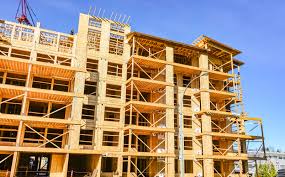In the realm of real estate development, the multifamily construction sector stands out as a beacon of growth and innovation. As urbanization continues to surge and demographics evolve, the demand for multifamily housing options has reached unprecedented levels. This article delves into the multifaceted world of multifamily construction, exploring its significance, trends, challenges, and prospects.
Meeting Diverse Needs
Multifamily construction encompasses a broad spectrum of residential developments, ranging from apartment complexes and condominiums to townhouses and mixed-use buildings. Its appeal lies in its ability to cater to diverse demographic groups, including young professionals seeking urban convenience, families desiring community amenities, and retirees opting for maintenance-free living.
Urbanization and Lifestyle Shifts
One of the primary drivers of multifamily construction is the global trend toward urbanization. As populations flock to cities in search of economic opportunities and vibrant lifestyles, the demand for centrally located housing options escalates. Multifamily developments, often situated in prime urban locations, offer residents proximity to workplaces, entertainment venues, public transportation, and essential services.
Moreover, evolving lifestyle preferences have reshaped the housing landscape. Millennials, in particular, exhibit a penchant for renting rather than owning, favoring flexibility and mobility over long-term commitments. This generational shift has fueled the rise of purpose-built rental properties, prompting developers to focus on creating rental communities with upscale amenities and modern conveniences.
Sustainable and Innovative Design
In response to growing environmental concerns and regulatory pressures, sustainability has become a cornerstone of modern multifamily construction. Developers are increasingly incorporating green building practices and energy-efficient technologies into their projects to minimize carbon footprints and reduce operating costs. From eco-friendly materials and energy-efficient appliances to rooftop gardens and solar panels, sustainable features have become integral components of multifamily developments.
Furthermore, innovation plays a pivotal role in shaping the design and functionality of multifamily properties. Smart home technology, for instance, allows residents to control lighting, temperature, security systems, and appliances through mobile apps, enhancing convenience and security. Similarly, shared amenities such as fitness centers, coworking spaces, rooftop terraces, and pet-friendly facilities cater to the diverse needs and preferences of residents, fostering a sense of community and belonging.
Overcoming Challenges
Despite its growth trajectory, multifamily construction is not without challenges. Rising construction costs, labor shortages, and regulatory complexities pose significant hurdles for developers seeking to bring projects to fruition. Moreover, the COVID-19 pandemic has introduced new uncertainties, affecting construction timelines, financing arrangements, and consumer preferences.
However, industry stakeholders are actively addressing these challenges through strategic partnerships, technological advancements, and innovative financing models. Collaborations between developers, contractors, and policymakers are essential for streamlining approval processes, reducing regulatory burdens, and promoting sustainable development practices. Additionally, investments in workforce training and development are critical for mitigating labor shortages and enhancing productivity in the construction sector.
Future Outlook
Looking ahead, the outlook for multifamily construction remains optimistic. Demographic trends, lifestyle shifts, and urbanization dynamics suggest continued demand for multifamily housing solutions across global markets. As cities grapple with affordability issues and housing shortages, multifamily developments offer a viable pathway to address these challenges while fostering inclusive, vibrant communities.
Moreover, emerging trends such as modular construction, adaptive reuse, and mixed-income developments are reshaping the multifamily landscape, driving innovation and diversification in the sector. By embracing technology, sustainability, and design excellence, multifamily developers can create spaces that not only meet the needs of today’s residents but also anticipate the demands of tomorrow’s urban dwellers.
In conclusion
Multifamily construction occupies a prominent position in the real estate industry, catalyzing urban growth, social connectivity, and economic vitality. Through strategic planning, collaboration, and innovation, stakeholders can navigate challenges and seize opportunities to shape the future of multifamily living in the 21st century.

